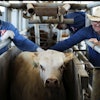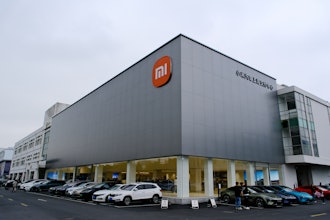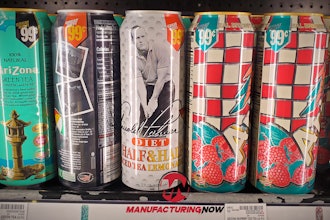While the basic requirements to minimize these hazards are spelled out by OSHA and other agencies, it is clear that some risks can be avoided by choosing the correct vacuum system to clean paint booths. This is not a shop-type vacuum, but one designed for more rigorous and thorough cleaning.
"When a deposited layer of powder comes in contact with a source of ignition, combustion of powder coatings can occur," says Steve LaFever, an engineer with Phoenix Wire Cloth, Inc., a Troy, MI-based manufacturer of wire mesh and related products, such as baskets, partitions, guards, fencing and screen. The source of ignition can even be the static electricity generated by ungrounded vacuum cleaners.
"Powder flowing in one direction through a vacuum-cleaning hose will create a significant static electric charge," says LaFever. "Plus, static electricity can build-up on the powder-coating deposits. If an ungrounded hose used to vacuum overspray powder were to contact an object that was grounded, the static electricity could arc and trigger a violent explosion." Powder combustion has resulted in raging fires that have caused catastrophic damage to factories. LaFever says that when Phoenix Wire Cloth converted its metal-finishing process to powder coating five years ago, maintenance workers originally used standard shop-type vacuums to remove paint residue from the company's 36-sq.-ft. paint booth, followed by a hand wipe-down. In fall 2002, the company began a search for an industrial-grade vacuum cleaning system that would make the powder-coat system safer and more efficient.
"We were a perfect candidate for powder-coat finishing technology and for a vacuum-based cleaning and recovery system," says LaFever, who headed the vacuum-selection team. He says he saw potential for faster turnaround on setups for new paint colors, improved safety, and savings from recovering powder overspray. This was also a key benefit because the company uses three standard colors on its products, and offers special colors and a clear coating. Each time a color change is required, the company's powder-spray booth must be cleaned and overspray vacuumed out. "And we have limited space for additional powder coating and baking facilities," says LaFever. "So by speeding up the clean-up process, we speed up productivity."
Because powder-coat recovery was a significant factor, LaFever decided the new vacuum system should have separate recovery canisters for the different colors. Not only would this allow for reuse of the powder, it would eliminate the need to treat the powder as hazardous waste, thereby saving disposal costs.
When specifications were agreed upon, Phoenix Wire Cloth selected a standard 55-gal. model made by Vac-U-Max, based in Belleville, NJ. The unit includes a wand and squeegee for fast cleanup, changeable collection containers, and is grounded. The company purchased three additional collection canisters "which allow us to recover our three basic colors in separate containers for later reuse," says LaFever. "Basically, the cleanup operation is now just a matter of blowing out the hoses and vacuuming the powder."
LaFever adds that the new cleaning system saves most on labor, though he expects that over time, productivity improvements and savings from powder recovery will also be substantial.
"Material savings are relative to the number of times we change color in the spray booth," he says. "We may be running a color for four days before we have to make a change, then need to change color again within a day. These savings will be a function of how often we have to clean up. As for the risk of static electric discharge," he says, "we are confident that has been minimized."


















